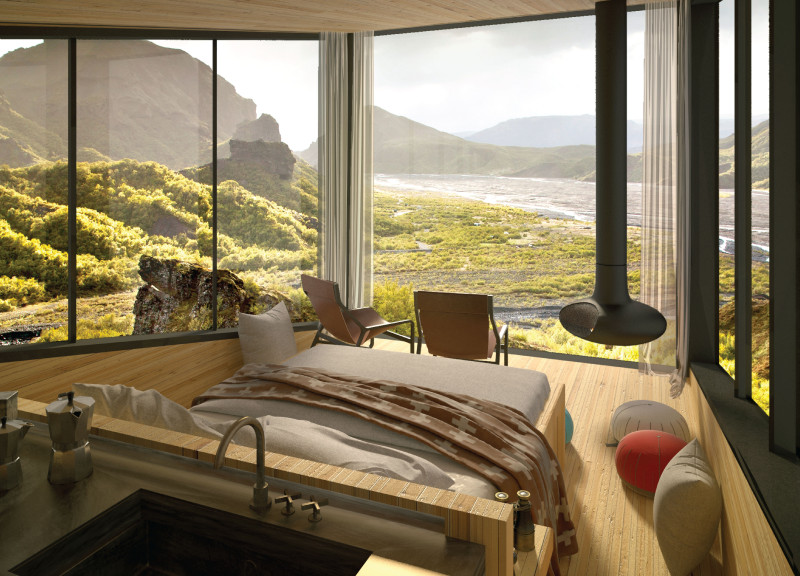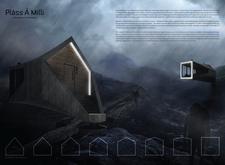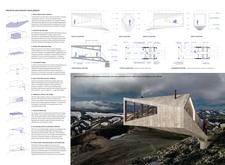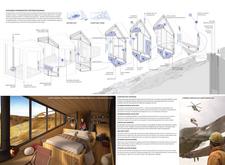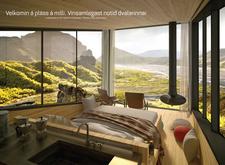5 key facts about this project
At its core, Pláss Á Milli aims to create a space that embraces the concept of transitional living. The design intentionally incorporates a sense of place, recognizing the unique dualities present in Iceland—volcanic and glacial landscapes coexisting in striking contrast. This retreat acts as a shelter from the elements while reinforcing the idea of being immersed in the landscape. By elevating the structure above the ground, the project minimizes disruption to the natural habitat, allowing occupants to appreciate the beauty of the terrain without compromising ecological integrity.
The functional aspects of the project are carefully considered, with a layout that maximizes utility while maintaining a sense of openness. Various zones within the structure cater to diverse activities, from communal gatherings to quiet moments of reflection. The interior spaces are crafted to be flexible, serving both individual needs and collective experiences. Large windows allow ample natural light to filter in, creating a welcoming atmosphere and framing scenic views of the breathtaking Icelandic wilderness.
An important characteristic of Pláss Á Milli is its thoughtful material selection. The use of concrete provides structural stability, addressing the demands of the region's unpredictable weather. Charred wood, reflecting traditional Icelandic architectural practices, contributes to aesthetic appeal while enhancing durability in the face of harsh climatic conditions. The incorporation of glass invites the exterior environment inward, blurring the boundaries between the inside and outside. Steel components further enhance building integrity while enabling innovative design features, such as cantilevered sections that create visually engaging spaces.
Pláss Á Milli's architectural design goes beyond functional and aesthetic considerations; it symbolizes a committed response to sustainability. The project utilizes energy-efficient solutions, incorporating solar panels and water filtration systems, which not only reduce the environmental impact but also ensure comfort and livability for its users. This focus on ecological responsibility aligns with the growing importance of sustainable architecture in contemporary design.
The unique design approaches taken in Pláss Á Milli position it as a significant example of how architecture can respond to both cultural heritage and environmental conditions. Integrating traditional forms with modern functionality, the retreat stands as a testament to the evolving narrative of Icelandic architecture. This innovative synergy encourages a dialogue about the relationship between people and nature, emphasizing the importance of context and sustainability in architectural practice.
As you explore Pláss Á Milli further, consider delving into the architectural plans, sections, and designs that underpin this project. Doing so will provide deeper insights into the architectural ideas that informed its development, enhancing your understanding of how effective design can create meaningful spaces that respect and enhance their surroundings.


